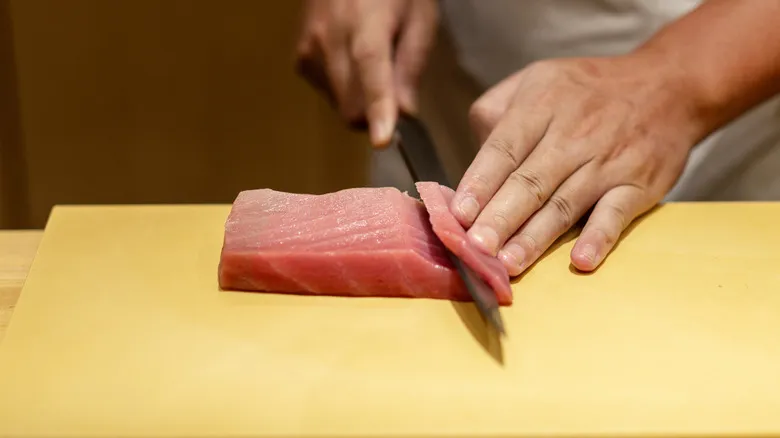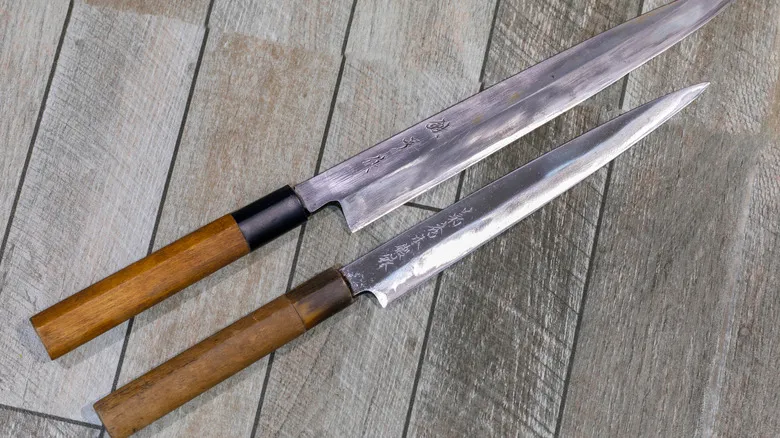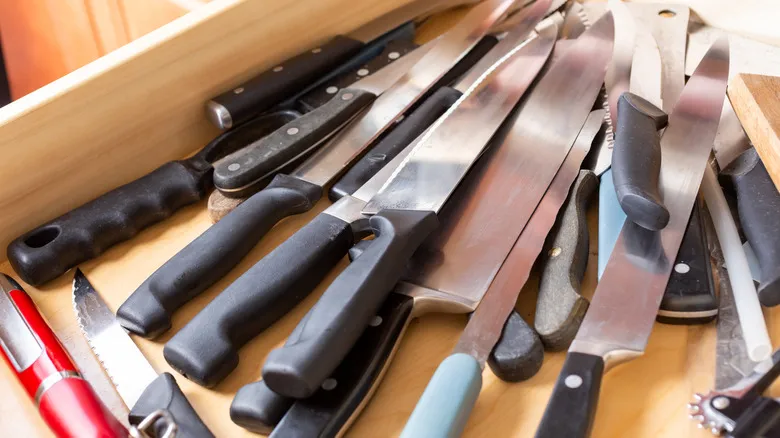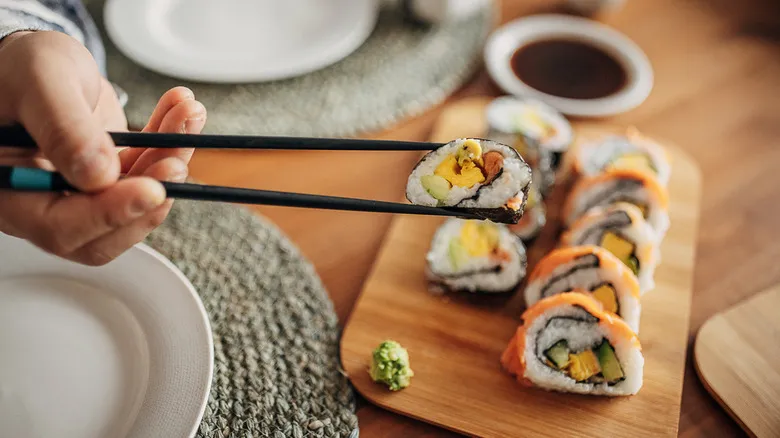Why the yanagiba cuts fish so well

The yanagiba knife boasts several distinctive features that make it the preferred choice for sushi chefs worldwide. The most notable aspect is its blade design: a single bevel that is straight and sharp on the right side, while the left side is only slightly concave. The blade's slenderness and length facilitate long, smooth cuts. This design enables razor-thin slices of fish that won’t adhere to the concave side, which is key to achieving the beautifully presented sashimi and sushi found in top sushi restaurants.
Mastering proper knife techniques, which requires practice, is crucial for achieving perfect fish cuts. It’s important to remember that this knife is not meant for downward pressure; that task is better suited for the deba knife, another traditional Japanese blade used for removing a fish's head. Most home cooks purchase sushi-grade fish already pre-portioned, so the cutting motion should involve a long, pulling action that relies primarily on the knife's weight with minimal force. By perfecting this technique, you can minimize damage to the fish's cell walls, helping to keep it fresh for a longer period.
What to look for when buying a yanagiba knife

The yanagiba knife is available in various sizes, ranging from 8 inches to 14 inches. You can also find different handle styles, including Western grips and traditional Japanese wa-handles. The blades are typically made from either stainless steel or carbon steel; while carbon steel holds its edge longer, it requires more maintenance.
To choose the right yanagiba knife, it's best to visit a knife shop in person, allowing you to handle the knives and select one that feels comfortable for you.
If an in-person visit isn't feasible, numerous online retailers offer a wide selection of yanagiba knives at different price points. A highly recommended entry-level option is the Kai Seki Magoroku Kinju AK-1106 240mm Yanagiba knife, which has received positive reviews. Once you acquire your new knife, maintaining its sharpness is crucial. You can sharpen it at home using a whetstone, or many knife retailers provide sharpening services for a small fee.
Recommended

French Vs Dutch Ovens: What's The Big Difference?

Andrew Zimmern Shared His 4 Must-Have Kitchen Tools

Why You Should Stop Storing Knives In That Random Kitchen Drawer

The 13 Best Air Fryers Money Can Buy, According To Reviews
Next up

